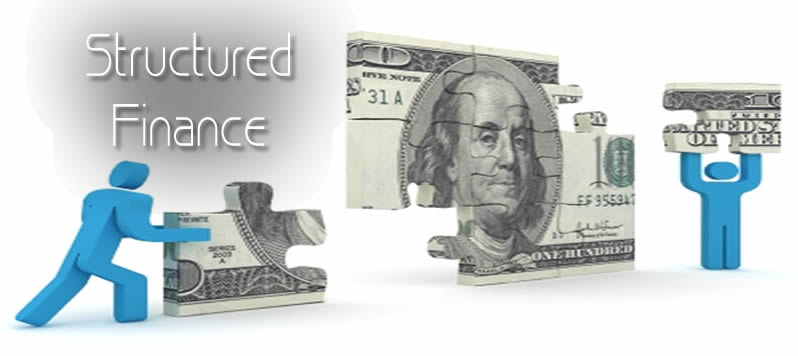
What is structured finance?
In simple words, structured finance is the use of complex financial instruments.
- Structured financial instruments are riskier
- It is mostly used by financial institutions and companies with unique financing needs
Some examples of structured financial instruments- Derivatives, Mortgage-backed securities (MBS), Collateralised debt obligations (CDO), credit default swaps (CDS), synthetic financial instruments & syndicated loans,
Derivatives
A derivative is a financial instrument that derives its value/ price from the value of another asset, known as an underlying asset. The common underlying assets are stocks, bonds, commodities, currencies, interest rates, etc.
The basic types of derivatives are forward, futures, options, and swap.
Read more about Derivatives from the following article:
Mortgage-backed Securities (MBS)
I had already explained MBS in an article on the financial crisis of 2008. The following is the extract:
- Home mortgage loans are assets for the banks. In return for these loans, they get interest payment regularly and principal at the maturity of the loan.
- Banks can sell these assets to other financial institutions. (transferring the stream of payments as well)
- Banks are known as the originators of the loans/ assets
- They aggregate all the mortgage loans into a homogeneous pool. Pooling is done to reduce and diversify risk.
- They cut this homogeneous pool into tranches/ slices.
- Then they issued securities backed by these assets. This security is Mortgage-backed security.
- These securities can be traded like shares
- This process is called securitisation.
- If an investor buys MBS, they receive a proportionate share of principal and interest.
- Investors in MBS include pension funds, insurance companies, foreign banks, wealthy individuals. It is also retained by the financial institutions in their own account.
- To summarise, a security backed by home mortgage loans is called Mortage-backed security.
2. Collateral Debt obligations
- It is a security backed by assets other than the mortgage loan. The examples of the assets are auto loan, credit card debt, education loan etc.
- For CDOs, auto loans etc. are pooled together and securities are issued backed by them
- It has the same mechanism as MBS described above.
4. Credit Default Swap: (CDS)
- It is an insurance instrument. A mortgage-backed security investor can buy CDS to insure it against losses in the security.
- The USA’s largest insurance company called AIG issued CDS to Mortgage-Backed Security (MBS) investors in return for a premium.
5. Synthetic financial instruments
- It is used to create payoff of a financial instrument using two or more financial instruments
- For example- you can create a payoff of a share of a company by purchasing a call option and selling a put option on the share.
- Read this article to know what is call option & put option: Derivatives meaning
- Suppose, I want to buy a share for Rs. 50 after 90 days. I can instead buy a call option and sell a put option for an exercise price of Rs. 50 which will expire after 90 days.
- If the price of the share rises to Rs.52, I can exercise my call option (right to buy at Rs. 50). The buyer of the put option will not exercise his right (to sell the share to me at Rs.50) as he can sell the share in the market at Rs.52
- If the price of the share falls to 48, I will not exercise my call option (right to buy at Rs.50). The buyer of the put share will exercise his right to sell the share to me at Rs. 50.
- So, buying a call option and selling a put option is like purchasing the underlying share when the options expire.
6. Syndicated loans
A syndicated loan is a loan provided by a group of lenders to a single borrower. (Unlike ordinary loans where there is a single lender)
Syndicating the loan on a project allows lenders to spread risk and take part in financial opportunities that may be too large for their individual capital base.
Read more: Investopedia
The topic for this post was suggested on our Contact/ Suggest a topic page